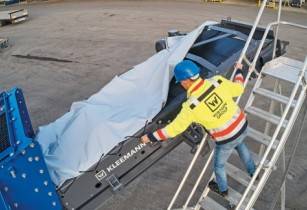Air blowers using internal compression instead of external compression can set a new standard for energy efficiency in the low-pressure market according to a new technical whitepaper from Atlas Copco?s oil-free air division. The whitepaper explains the differences between screw technology and the traditional ?Roots? type lobe technology and says that screw technology, which is used in Atlas Copcos ZS screw blowers, is on average 30 per cent more energy efficient. The manufacturer recently launched its full range of ZS screw blowers that are designed to improve energy efficiency for low-pressure applications and industries such as wastewater treatment and pneumatic conveying.
?Over the past 50 years the blower market for small volume flows has not seen any major technical improvements,? said Chris Lybaert, president of Atlas Copco?s oil-free air division. ?The only considerable development we have seen with the ?Roots? type lobe blowers, was the reduction of pulsation levels. There were still significant steps to be made in the area of energy efficiency. Atlas Copco achieved this by developing the twin screw design for a low pressure blower. By doing so we introduced a technological advantage in this market segment.?
The range of ZS screw blowers uses the concept of internal compression, while the traditional 'Roots' type lobe blowers rely on external compression to obtain an external system pressure. The detailed technical whitepaper demonstrates that, with a thermodynamic approach, internal compression is more efficient than external compression from 0.4 bar(e) / 5.8 psi(g) upwards. Tests, witnessed and certified by the independent Technische ?berwachungs-Verein (German Technical Monitoring Association, or T?V) have proven that the ZS is 23.8 per cent more energy-efficient than a tri-lobe blower at 0.5 bar(e)/7 psig, and 39.7 per cent at 0.9 bar(e)/13 psig. The technical whitepaper, T?V certificate and additional information, images and movies can be found on www.efficiencyblowers.com


























